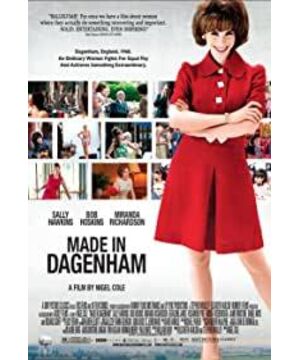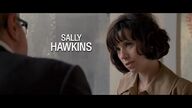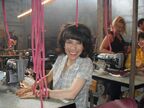When the film first introduced the Ford bus, it was mentioned that there were more than 40,000 male employees, while fewer than 200 female employees were engaged in sewing seat leather. The comparison of the number gap can reflect the difference in the status of men and women, and it also shows the reality that there are no female representatives in the later trade unions. The factory facilities where the female employees are located are simple, and there is no good ventilation when the weather is hot, so the female employees don’t wear coats, and the roof leaks when it rains, showing the poor working environment. On the other hand, in the production workshop where the male employees are located, the windows are bright and clean, and the modern assembly line is not as cold as the female employees' workshop. This was the background before the feminist movement at the time.
In addition, many places in the film reflect the gap between the ordinary working class and the middle and upper court society. The first is the difference in accents. The UK is a country where social status can be judged from a flat accent. And the accent of the female factory worker is obviously different from another female character who graduated from Cambridge and Minister Barbara Castle. In addition, the living environment is very different. The heroine only lives in a house similar to the Council House, which is simple and crowded, while a manager of the Ford company lives in an independent House with the upper floor of the house. And the heroine expresses deep admiration when commenting on other people's clothes twice, showing the gap between economic income and middle and upper class society.
In short, although this film focuses on the activities of women fighting for Equal pay, we can also take a look at the leopard and explore Britain in the 1960s.
View more about Made in Dagenham reviews











